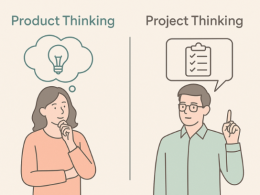There are many tools and techniques in today’s world that can help you maximize the value of the output produced. Among the many options available, Agile is one of the most commonly used.
This is because of its ability to enable teams to work in small increments and respond to changes quickly.
What is Agile?
Agile is a collection of principles used in software development and project management. Agile focuses on enabling teams to deliver work in small, workable increments, thus delivering value to their customers with ease.
Evaluation of the requirements, plans, and results take place continuously. This helps the team in responding to changes in a quick manner.
The major principles of Agile are detailed in the Agile manifesto. Created in early 2001, the Agile manifesto details the different values and principles that embody the process. The manifesto states:
- Individuals and Interactions OVER Process and Tools
- Working Products OVER Comprehensive Documentation
- Customer Collaboration OVER Contract Negotiation
- Responding to Changes OVER Following a Plan
Next, let’s have a look at different Agile methodologies
Check out this video for a visual explanation:
Agile Methodologies
1. Extreme Programming
It is a framework that enables teams to create high-quality software that helps improve their quality of life. It enables software development alongside appropriate engineering practices.
It is applicable while handling changing software requirements risks caused due to new software, working with a small, extended development team, and technology that allows automated unit and functional tests.
2. Kanban
It is a method that’s used to design, manage, and improve the flow of systems. Kanban enables organizations to visualize their flow of work and limit the amount of work in progress.
It is used in situations where work arrives unpredictably, and where it needs to be deployed immediately without waiting for other work items.
3. Lean
It is a set of tools and principles that focuses on identifying and removing waste to speed up process development. Value is maximized, and waste is minimized. It is used in just about every industry that produces waste in some form.
4. Scrum
It is a framework used by teams to establish a hypothesis, test it, reflect on the experience, and make adjustments. It enables teams to incorporate practices from other frameworks depending on the requirements.
It is used by cross-functional teams that are working on product development, and the work is split into more than one 2-4 week iterations.
5. Crystal
It focuses on people and their interactions, rather than on tools and processes. Aimed to streamline processes and improve optimization, Crystal works on the principle that projects are unique and dynamic.
It is used when the focus is on strengthening team communication, continuous integration, active user involvement, and configurable processes.
Next up, let’s take a look at some Agile principles
Agile Principles
To make a process Agile, the following principles need to be satisfied.
1. Customer Satisfaction
The customer needs to be satisfied with the quick delivery of the product.
2. Welcome Change
Even late in the development process, changing needs need to be addressed.
3. Deliver Frequently
Focus on a shorter timescale, and ensure products are delivered frequently.
4. Work Together
The business and development team need to work together through the course of the project.
5. Motivated Team
Team members must be motivated and trusted to complete the project successfully and on time.
6. Face-to-face
Having face-to-face interactions is one of the most effective forms of communication.
7. Working Software
Having working output is an indication of the progress made towards the final product.
8. Constant Pace
Agile promotes sustainable development.
9. Good Design
Improve agility by focusing on good design and technical excellence.
10. Simplicity
The amount of time where work isn’t being done needs to be reduced.
11. Self-Organization
These types of teams provide the best designs, requirements, and architectures.
12. Reflect and Adjust
The effectiveness of the team can be improved by regularly reflecting on their work and making improvements.
Now, let’s look at what makes Agile the first choice for several organizations worldwide.
Advantages of Agile
- Agile enables a large amount of collaboration and interaction between the client and the project team.
- Thanks to this, clients have improved transparency, and therefore a clearer understanding of the phases of the project is present.
- The product is delivered predictably, or sometimes earlier than expected.
- The cost of the project is predictable and follows a rigid schedule.
- Changes can refine and re-prioritize the product backlog.
- Enables the client to prioritize different features, allowing the team to ensure maximum project value.
- The project is broken down into smaller units, providing high-quality development, testing, and collaboration.
 Pin
PinIf you’re looking to get the skills to excel in Agile Methodology, then check out our Product Management program here.
Read more such blogs here. Explore our A-Z blog page for even more product management related insights.






